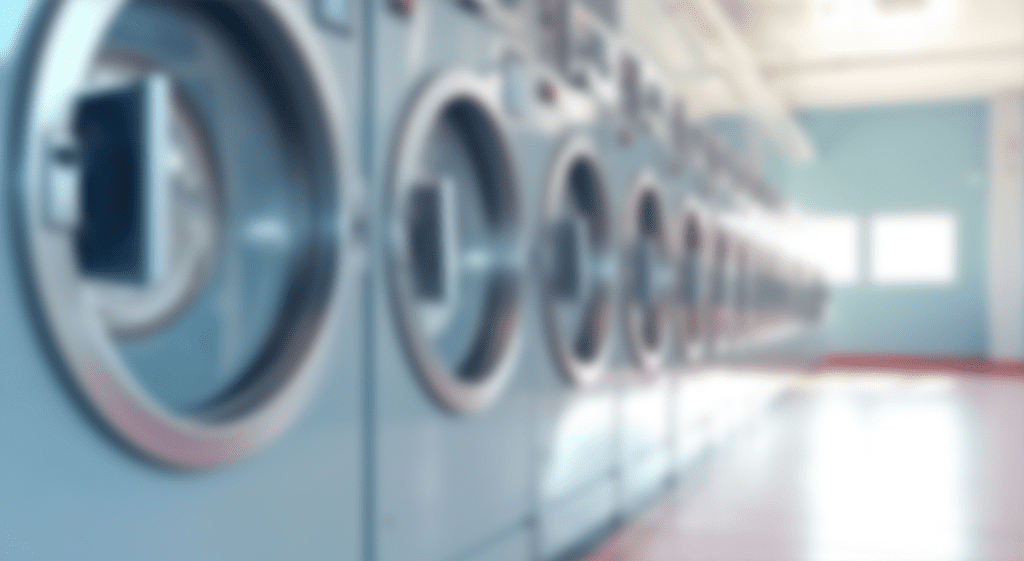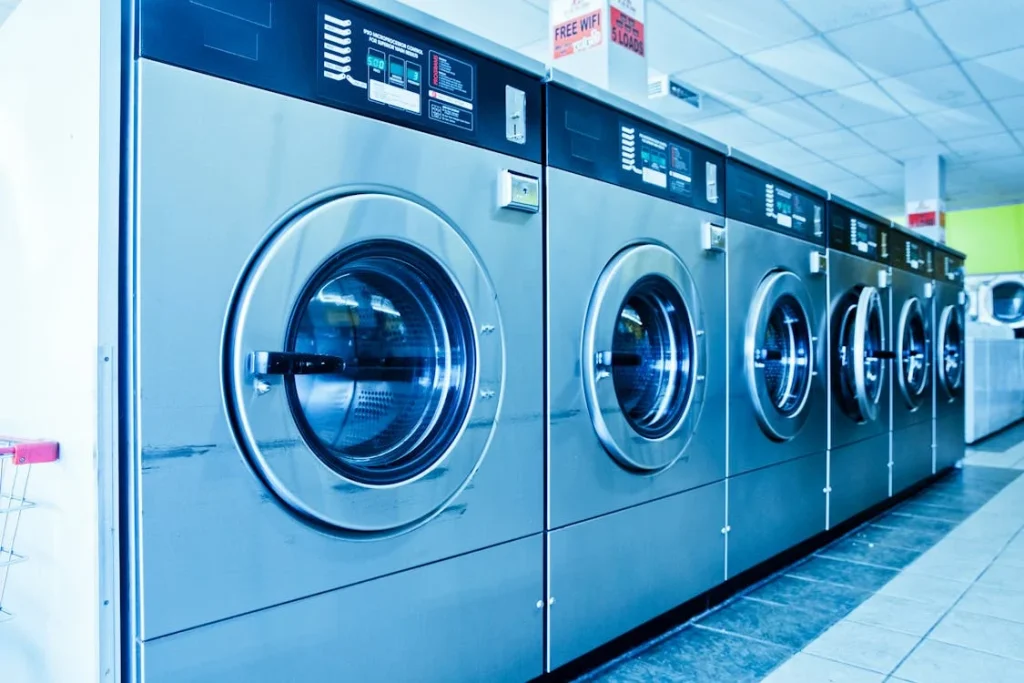Proper commercial wash extractor maintenance ensures efficiency, longevity, and cost savings. Regular upkeep prevents breakdowns, reduces energy costs, and improves wash quality. In this guide, we’ll provide practical maintenance tips to keep your machine running smoothly. Need professional solutions? Visit Spin Washing for expert assistance.
Table of Contents
- Why Proper Maintenance Matters
- Daily Maintenance Checklist
- Weekly Maintenance Tasks
- Monthly Preventive Maintenance
- Quarterly and Annual Maintenance
- Conclusion
- FAQs
Why Proper Maintenance Matters
Your washer extractor is the backbone of your laundry operation. Without regular maintenance, dirt, detergent residue, and mechanical wear can degrade performance, leading to expensive repairs and downtime. Proper upkeep ensures optimal washing results, extends the machine’s lifespan, and enhances energy efficiency. By following a structured maintenance routine, you can prevent common operational issues and avoid unnecessary expenses, ultimately improving productivity and customer satisfaction. A well-maintained machine reduces operational costs while maintaining consistent wash quality.

Daily Maintenance Checklist
Daily care helps detect minor issues before they escalate into major problems. Follow these essential steps to keep your machine in peak condition.
Inspecting for Visible Wear and Tear
A quick visual inspection can prevent unexpected breakdowns. Look for loose bolts, worn-out seals, and any unusual vibrations. Check the drum for foreign objects that could cause damage. Address minor issues immediately to avoid costly repairs. Additionally, ensure the control panel is functioning correctly and that error messages are not being ignored. Regular inspections help extend the lifespan of your washer extractor and maintain consistent performance.
Cleaning Lint Traps and Drainage Systems
Lint buildup in filters and drainage systems can obstruct water flow, reducing efficiency and increasing drying time. Clean lint traps daily to prevent clogging, and check drainage filters for debris that could cause blockages. A properly maintained drainage system ensures effective water removal, preventing excessive strain on the motor and prolonging machine life. Regular cleaning also minimizes the risk of mold growth and unpleasant odors, improving overall hygiene and performance.
Checking for Leaks and Loose Connections
Water leaks can lead to costly repairs and wasted resources. Inspect all hoses, gaskets, and fittings for moisture buildup or drips. Tighten loose connections and replace any cracked or damaged parts. Ignoring leaks can result in structural damage to the machine and surrounding areas. Additionally, ensure the detergent and water inlet valves are properly sealed to avoid leaks that could impact wash quality. Preventative measures help maintain efficiency and reduce water and energy consumption.
Weekly Maintenance Tasks
A more thorough inspection and cleaning routine should be carried out weekly to prevent gradual wear and tear from affecting machine performance.
Deep Cleaning the Detergent Dispensers
Detergent compartments can accumulate residue over time, leading to blockages and uneven soap distribution. Remove and clean dispensers thoroughly to prevent buildup that could affect wash quality. Use a mild detergent and warm water to dissolve hardened residue. This simple maintenance step ensures that cleaning agents are evenly distributed, improving wash efficiency and preventing fabric stains. Additionally, inspect the dispenser for mold or mildew growth, which can negatively impact hygiene and leave unwanted odors.
Inspecting Belts and Seals for Damage
Belts and seals are crucial components that can wear out with regular use. Inspect them weekly for signs of fraying, cracking, or misalignment. Loose or damaged belts can cause excessive noise and vibration, affecting overall performance. Replace worn-out parts promptly to avoid operational failures. Additionally, lubricate moving parts as needed to prevent unnecessary strain on the motor. Ensuring belts and seals are in good condition helps maintain the machine’s efficiency and extends its lifespan.
Testing the Water Inlet and Drain Valves
Blocked or malfunctioning water inlet and drain valves can lead to incomplete wash cycles and poor water efficiency. Check for mineral buildup or debris that could obstruct water flow. Clean or replace clogged valves to ensure smooth operation. Properly functioning valves improve water management, reducing waste and lowering utility costs. Additionally, test for proper pressure levels and ensure that no leaks are present in the system. Addressing these issues promptly prevents major disruptions to your laundry operations.
Monthly Preventive Maintenance
Beyond daily and weekly tasks, certain maintenance steps should be performed monthly to optimize machine performance and prevent long-term damage.
Lubricating Bearings and Moving Parts
Friction from moving components can lead to excessive wear and tear. Apply lubricant to bearings and other essential parts monthly to reduce stress on the motor. Proper lubrication ensures smooth operation and extends the lifespan of critical machine components. Additionally, check for signs of overheating or unusual noises, which could indicate insufficient lubrication. Keeping moving parts well-maintained minimizes breakdowns and ensures continuous performance without unexpected interruptions.
Calibrating Water Levels and Temperature Controls
Incorrect water levels or temperature settings can affect wash quality and energy efficiency. Check calibration settings to ensure accurate performance. Adjust temperature controls as needed to optimize detergent activation and stain removal. Regular calibration prevents overheating issues and ensures consistent water usage, reducing utility expenses. Additionally, monitor cycle times to confirm that each wash runs according to manufacturer specifications. Proper calibration enhances overall efficiency while maintaining fabric care standards.
Inspecting and Tightening Electrical Connections
Loose electrical connections can cause intermittent power failures and operational malfunctions. Inspect wiring and tighten any loose terminals to prevent safety hazards. Look for signs of wear or overheating on electrical components. Regular inspections help prevent unexpected machine failures and reduce the risk of costly repairs. Additionally, ensure that all safety switches and sensors function correctly to maintain optimal machine performance. Keeping electrical connections secure is essential for reliable and safe operation.
Quarterly and Annual Maintenance
Larger maintenance checks should be scheduled every few months to keep your washer extractor operating at peak efficiency.
Checking the Machine’s Balance and Alignment
An unbalanced machine can cause excessive vibration and noise, leading to mechanical strain. Ensure the machine is properly leveled and adjust alignment if necessary. Prolonged imbalance can damage internal components, affecting long-term performance. Regularly checking and correcting alignment prevents unnecessary stress on bearings and motor components. Additionally, ensure that the shock absorbers and suspension system are functioning correctly to reduce excessive movement during high-speed cycles.
Performing a Comprehensive Inspection by a Technician
While routine maintenance can be done in-house, a professional technician should inspect the machine periodically. They can identify hidden issues that may not be visible during daily checks. A thorough professional assessment ensures that all components function optimally. Scheduled inspections help prevent major repairs by detecting problems early. Additionally, technicians can provide expert recommendations on part replacements and efficiency improvements to keep your machine running at peak performance.
Replacing Worn-Out Components
Over time, essential parts such as seals, bearings, and filters will wear out. Replacing these components annually helps prevent breakdowns and ensures consistent performance. Worn-out parts can compromise machine efficiency and increase operating costs. Keeping spare parts on hand allows for quick replacements, reducing downtime. Additionally, replacing aging components improves safety, ensuring that the machine continues to function without risk of unexpected failures. Regular part replacements enhance machine longevity and reduce repair costs.
Conclusion
A well-maintained commercial wash extractor operates efficiently, reduces costs, and lasts longer. By following this structured maintenance plan, you can avoid costly repairs and downtime. Need expert assistance? Contact Spin Washing today for high-quality commercial laundry solutions and professional maintenance services. Ensure your laundry operations run smoothly with proactive care!
FAQs
1. How often should I clean my commercial washer extractor?
Daily cleaning is recommended, along with deep cleaning and inspections on a weekly and monthly basis.
2. Can I use household detergents for my commercial machine?
No, commercial washers require specialized detergents to prevent residue buildup and ensure effective cleaning.
3. What are the signs that my machine needs professional repair?
Unusual noises, leaks, poor drainage, or error messages indicate the need for a professional inspection.
4. How do I prevent mold buildup inside the drum?
Leave the door open after each cycle to allow airflow and regularly clean the drum with a mildew-preventing solution.
5. Is there a recommended maintenance schedule for my washer extractor?
Yes, follow a daily, weekly, monthly, and annual maintenance plan to maximize performance and longevity.
Here are some other articles that we think might interest you:
Top 6 Brands of Industrial Washing Machines


